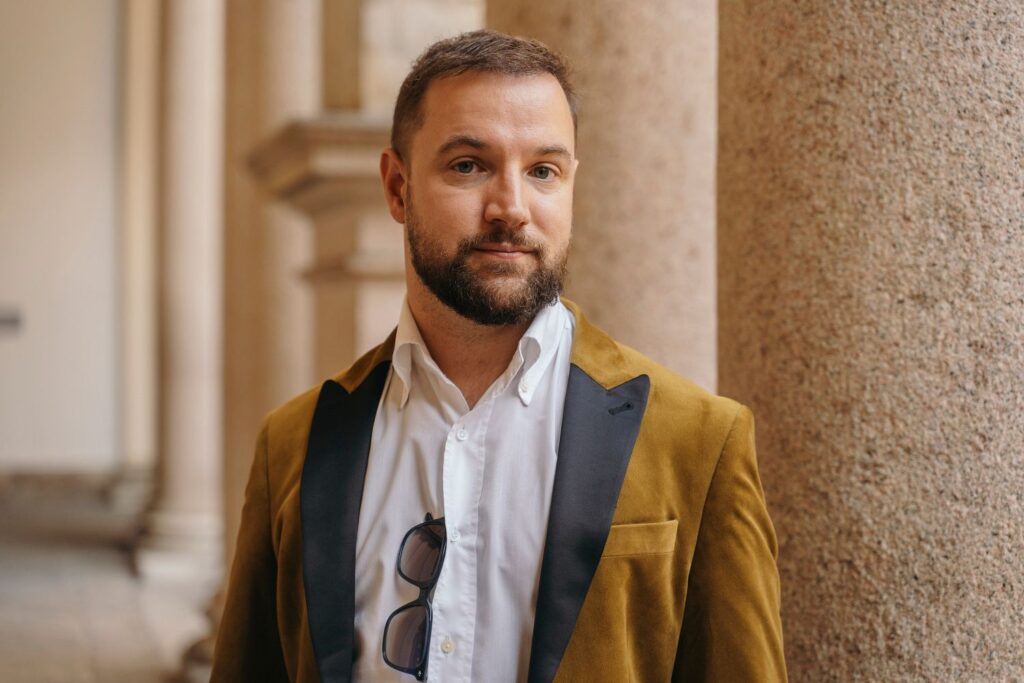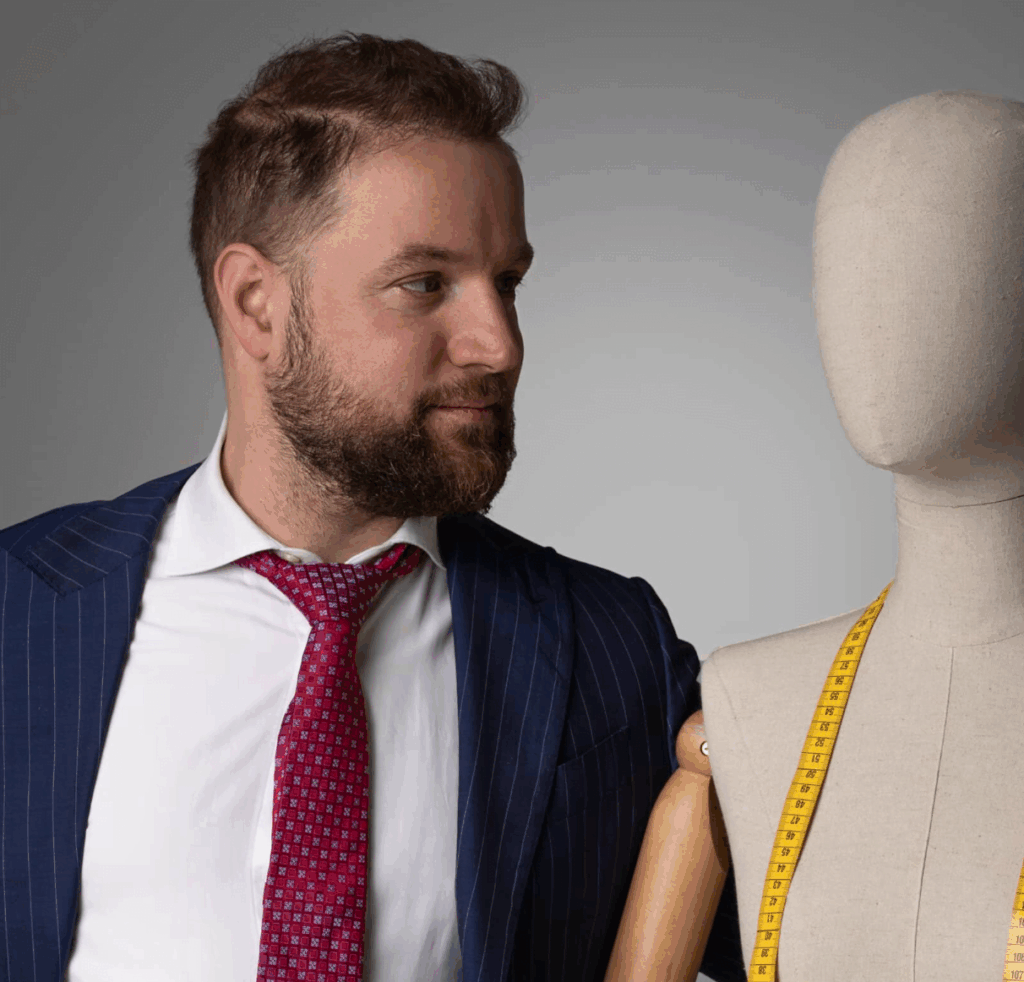Luxury brands are getting smarter about how they connect with their most exclusive customers. One brand recently saw customer retention rates soar after using microtargeting strategies that analyze lifestyle data and digital behavior in real time. Most people assume luxury marketing is all about high price tags or flashy ads. The real secret is microtargeting, which quietly turns every interaction into a one-on-one experience tailored to each client’s deepest desires.
Table of Contents
- What Is Microtargeting In The Luxury Sector?
- The Importance Of Personalization In Luxury Marketing
- How Microtargeting Enhances Customer Experience
- Key Concepts In Microtargeting Luxury Audiences
- Real-World Examples Of Microtargeting Success
Quick Summary
| Takeaway | Explanation |
|---|---|
| Microtargeting creates hyper-personalized luxury experiences | Advanced data analytics allow brands to tailor interactions, making customers feel uniquely understood in a crowded market. |
| Emphasize emotional connections over transactions | Luxury consumers value tailored narratives; effective marketing fosters relationships rather than just aiming for immediate sales. |
| Utilize technology for anticipatory service | Artificial intelligence and machine learning enable brands to predict preferences, improving the relevance and personalization of interactions. |
| Focus on psychological profiling of luxury consumers | Understanding complex motivations and desires helps brands create communication that resonates deeply with target audiences. |
| Measure success through engagement metrics | Evaluating customer retention and emotional connection enhance insights on the effectiveness of microtargeting strategies. |
What is Microtargeting in the Luxury Sector?
Microtargeting represents a sophisticated marketing approach that transforms how luxury brands understand and engage with their most discerning clientele. At its core, this strategy leverages advanced data analytics and behavioral insights to create hyper-personalized communication and experiences tailored to specific consumer segments within the luxury market.
The Precision of Digital Intelligence
In the luxury sector, microtargeting goes beyond traditional demographic segmentation. It involves collecting and analyzing intricate data points about high-net-worth individuals, including their purchasing behaviors, lifestyle preferences, digital interactions, and aspirational motivations. Research from luxury marketing experts indicates that this approach allows brands to craft messaging and offerings that resonate deeply with individual customer profiles.
Key characteristics of luxury microtargeting include:
-
Granular understanding of consumer psychology
-
Predictive modeling of potential purchase behaviors
-
Real-time personalization of brand interactions
Strategic Customization and Exclusivity
For luxury brands, microtargeting is not merely about selling products but about creating exclusive experiences that make each customer feel uniquely understood. This strategy transforms generic marketing into precision-engineered communication that speaks directly to an individual’s desires and lifestyle.
By integrating psychological insights with advanced technological capabilities, luxury brands can now anticipate customer needs before they are explicitly expressed. Read more about luxury consumer behavior insights to understand how these strategies are revolutionizing marketing approaches in high-end markets.
Ultimately, microtargeting in luxury is about crafting a narrative of personal relevance that transcends traditional marketing boundaries, turning each interaction into a bespoke experience that resonates with the most sophisticated consumers.
To help clarify the core differences, the following table compares traditional luxury marketing approaches with microtargeting strategies in the luxury sector.
| Aspect | Traditional Luxury Marketing | Microtargeting in Luxury |
|---|---|---|
| Audience Segmentation | Broad demographic segmentation | Highly specific, data-driven segments |
| Personalization Level | Limited, often generic messaging | Hyper-personalized communication |
| Use of Technology | Minimal, legacy systems | Advanced AI, machine learning, analytics |
| Customer Experience | One-size-fits-all, transactional | Tailored, relationship-focused |
| Anticipatory Service | Reactive, based on explicit needs | Proactive, predictive recommendations |
| Emotional Resonance | Superficial brand narratives | Deep, individual emotional connection |
| Measurement of Success | Sales volume, campaign reach | Engagement, retention, emotional metrics |
The Importance of Personalization in Luxury Marketing
Personalization is not merely a marketing strategy in the luxury sector but a fundamental expectation of high-end consumers who demand experiences that reflect their unique identity and sophisticated lifestyle. In an era of mass production and generic communication, luxury brands must transcend traditional marketing approaches to create deeply individualized interactions.
Emotional Connection through Tailored Experiences
Research examining social media marketing in luxury brands reveals that personalization significantly enhances customer relationships by creating emotional resonance. Luxury consumers do not just purchase products they invest in narratives that align with their personal aspirations and values.
Key elements of effective personalization include:
- Understanding individual customer preferences beyond demographic data
- Creating narrative experiences that feel exclusively crafted
- Developing communication channels that feel intimate and responsive
Technological Empowerment of Personalized Engagement
Advanced technologies like artificial intelligence and machine learning enable luxury brands to transform vast amounts of consumer data into meaningful, personalized interactions. These technologies allow brands to predict customer desires, recommend products intuitively, and design experiences that feel remarkably bespoke.
Learn more about creating exceptional luxury brand experiences to understand how cutting-edge technologies are revolutionizing customer engagement strategies.
Ultimately, personalization in luxury marketing represents a sophisticated dialogue between brand and consumer where each interaction becomes an opportunity to demonstrate understanding, respect, and exceptional attention to individual preferences.
How Microtargeting Enhances Customer Experience
Microtargeting transforms customer experience in luxury markets by creating deeply personalized interactions that transcend traditional marketing boundaries. This sophisticated approach goes beyond simple data collection, enabling brands to craft emotionally resonant and intellectually engaging experiences that make each customer feel uniquely understood.
Precision in Understanding Customer Desires
Research on ultra-high-net-worth individuals reveals that luxury consumers expect extraordinary, exclusive experiences that reflect their individual preferences and lifestyle aspirations. Microtargeting allows brands to decode complex customer motivations by analyzing intricate behavioral patterns, preferences, and contextual nuances.
Key dimensions of enhanced customer experience through microtargeting include:
- Creating anticipatory and predictive service models
- Delivering contextually relevant communication
- Developing hyper-personalized product recommendations
Technology-Driven Experiential Intelligence
Advanced technologies like artificial intelligence and machine learning enable luxury brands to transform raw customer data into meaningful, intuitive interactions. These technologies analyze multiple touchpoints digital interactions, purchase history, social media engagement to construct comprehensive customer profiles that inform every brand interaction.
Explore our guide on understanding luxury brand experiences to gain deeper insights into how cutting-edge technologies are revolutionizing customer engagement strategies.
Ultimately, microtargeting represents a paradigm shift from transactional marketing to a more holistic, relationship-driven approach where each interaction becomes an opportunity to demonstrate profound understanding and exceptional attentiveness to individual customer needs.
Key Concepts in Microtargeting Luxury Audiences
Microtargeting luxury audiences represents a sophisticated approach to consumer engagement that demands nuanced understanding of psychological, behavioral, and technological dimensions. This strategy transcends traditional marketing segmentation by creating precise, emotionally intelligent communication frameworks that recognize the complexity of high-end consumer identities.
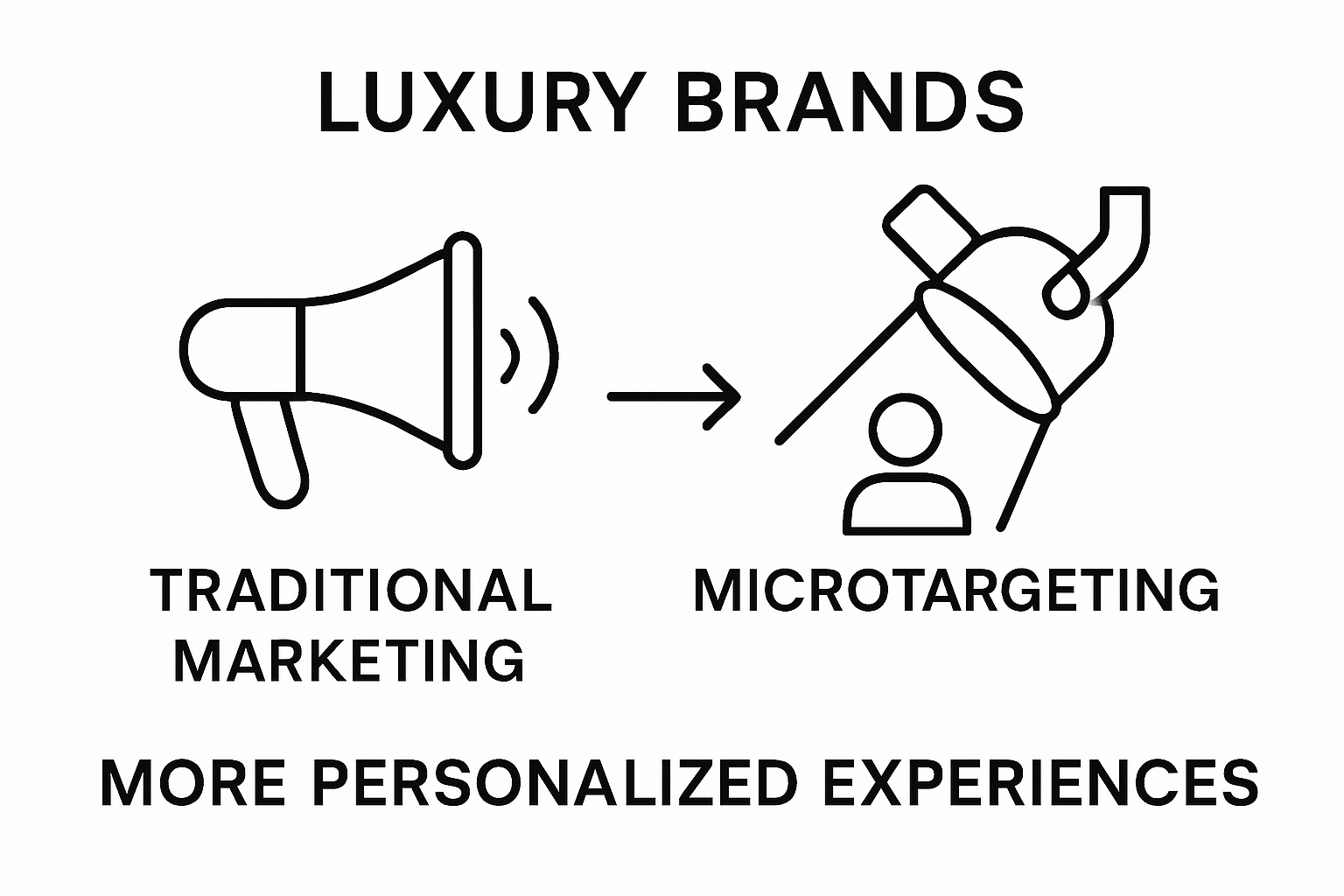
Psychological Profiling and Consumer Motivation
Research exploring the psychology of luxury consumption reveals that luxury consumers are characterized by intricate value systems and complex motivational drivers. Successful microtargeting requires deep comprehension of these psychological nuances that extend beyond demographic data and purchasing power.
Key psychological dimensions in luxury audience targeting include:
- Status signaling and identity expression
- Emotional connection and aspirational narratives
- Individual perception of personal value and exclusivity
Data Architecture and Precision Mapping
Effective microtargeting in luxury markets relies on sophisticated data infrastructure that integrates multiple behavioral signals. This involves constructing comprehensive consumer profiles by synthesizing diverse data streams such as digital interactions, purchase history, lifestyle preferences, and social media engagement.
Explore our insights into luxury consumer behavior to understand the intricate methodologies behind advanced audience segmentation.
Ultimately, microtargeting luxury audiences is an art form that combines technological precision with deep psychological understanding, transforming raw data into meaningful, personalized brand experiences that resonate with the most discerning consumers.
Real-World Examples of Microtargeting Success
Microtargeting in luxury markets transcends theoretical concepts by delivering transformative customer experiences that demonstrate the profound potential of personalized marketing strategies. These real-world examples illustrate how sophisticated brands leverage data intelligence to create unprecedented levels of customer engagement and brand loyalty.
Precision Brand Storytelling
Luxury brands have increasingly used microtargeting to craft narratives that resonate deeply with specific consumer segments. Exploring the art of brand transformation reveals how innovative companies reimagine consumer perceptions through hyper-personalized communication strategies.
Key success indicators in microtargeting implementation include:
- Dramatically increased customer retention rates
- Enhanced emotional connection with brand messaging
- Significantly improved conversion metrics
Technology-Enabled Personalization Strategies
Leading luxury brands now employ advanced artificial intelligence and machine learning algorithms to analyze customer data across multiple touchpoints. These technologies enable brands to predict customer preferences with remarkable accuracy, allowing for anticipatory and contextually relevant interactions that feel genuinely individualized.
Discover automotive marketing strategies that demonstrate how precision targeting can revolutionize customer engagement across different luxury sectors.
Ultimately, successful microtargeting transforms traditional marketing from a one-size-fits-all approach to a nuanced, relationship-driven dialogue that makes each customer feel uniquely understood and valued.
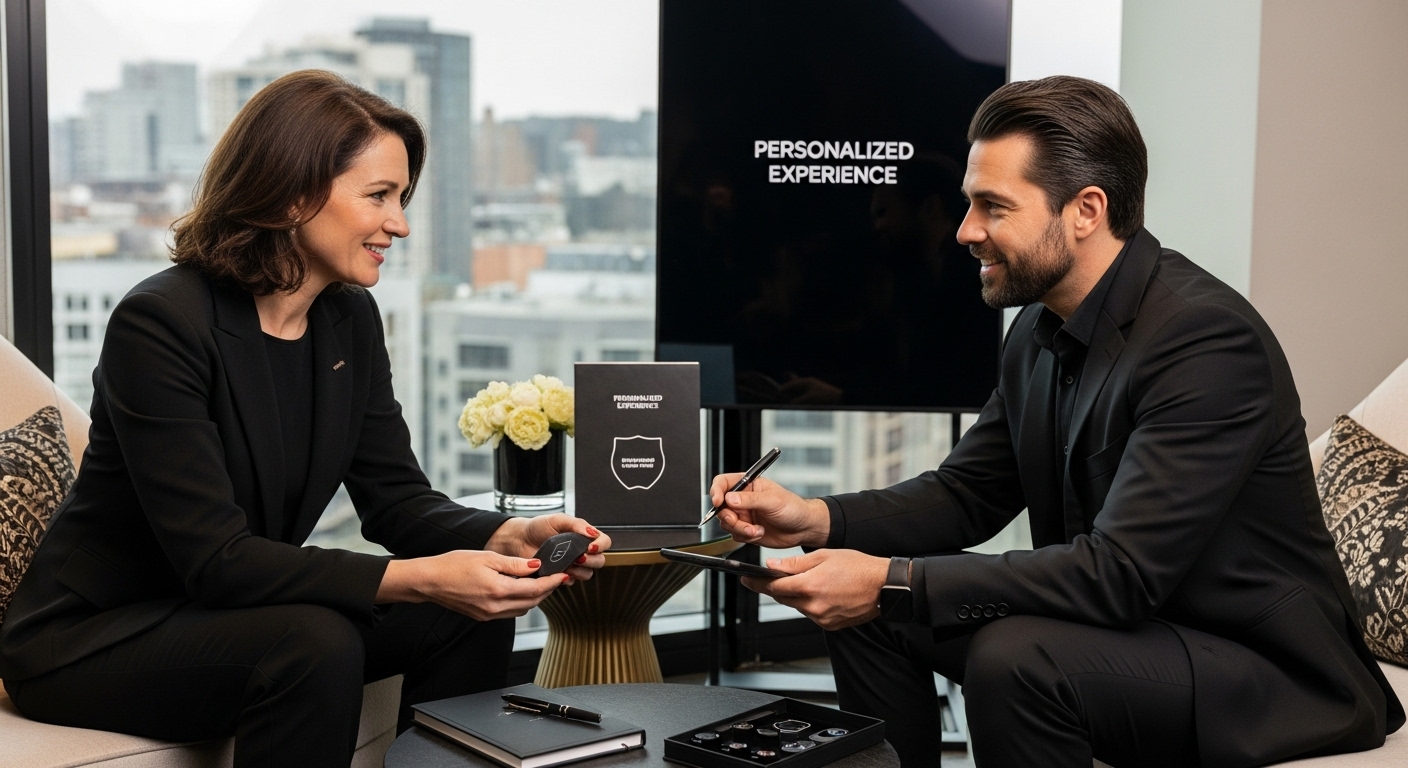
Ready to Experience Microtargeting Made for Luxury?
Recognizing your need for personalization and precision in luxury marketing is the first step. The article highlights how microtargeting can uncover what truly matters for high-end consumers and transform ordinary campaigns into unforgettable brand experiences. Many brands still struggle with generic messaging or fail to create real emotional connections, which means their investments in digital innovation may not deliver real results.
If you want to go beyond surface-level segmentation and tap into the power of psychology-driven marketing, Corrado Manenti delivers tailored guidance that draws on deep psychological insights and the latest digital strategies. See how our approach to Marketing Moda can help you connect with sophisticated audiences in a way that feels personal and unique.
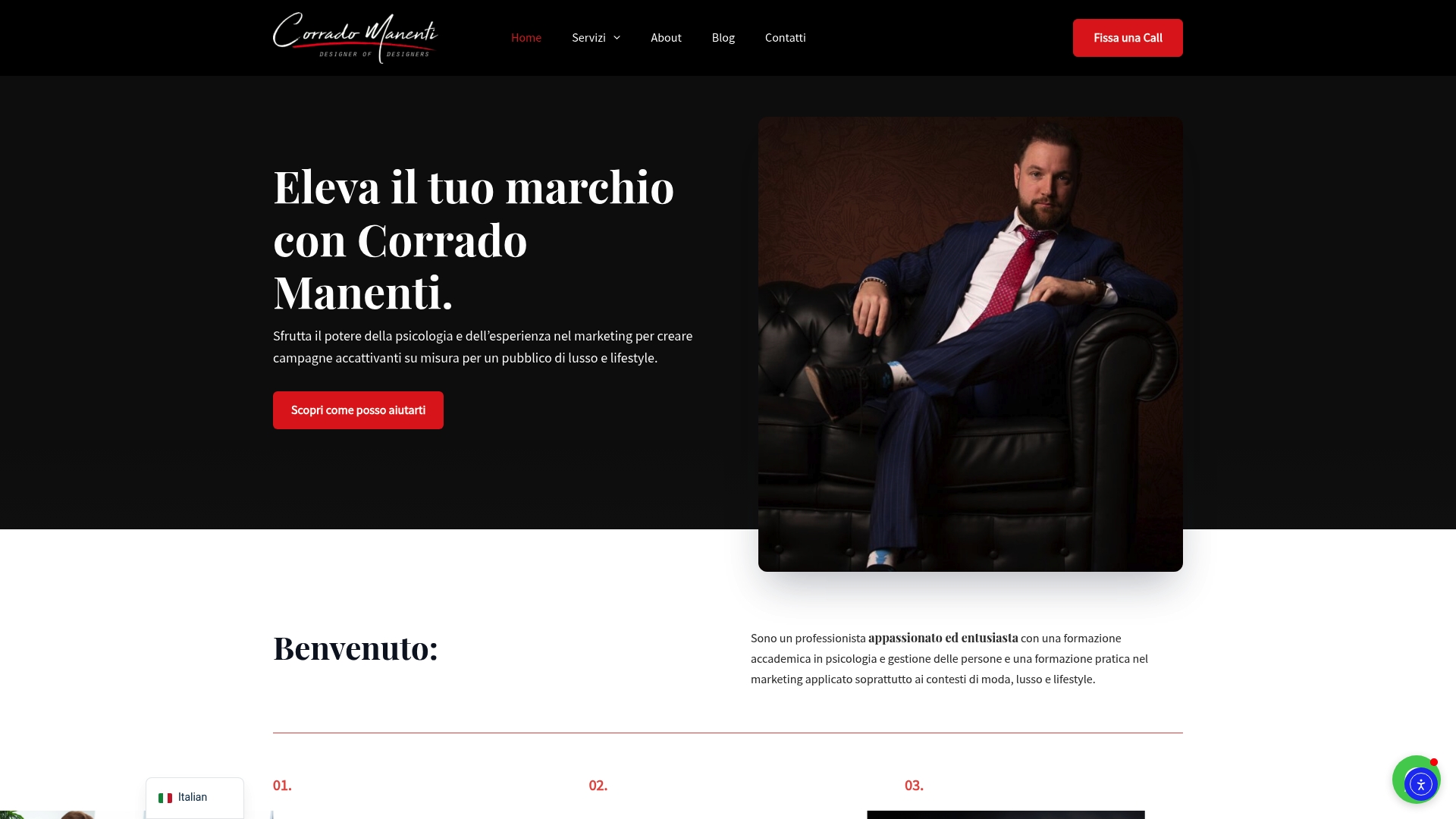
Stop letting your brand blend in. The market is moving fast, and personalization is no longer optional. Explore more at https://corradomanenti.it or dive deeper into our Marketing Fashion solutions. Discover how your brand can stand out through microtargeting that resonates—and start building loyalty with every interaction.
Frequently Asked Questions
What is the concept of microtargeting in the luxury sector?
Microtargeting in the luxury sector refers to a sophisticated marketing strategy that uses advanced data analytics and behavioral insights to create hyper-personalized communication and experiences tailored to specific consumer segments within the luxury market.
How does microtargeting enhance customer experiences in luxury marketing?
Microtargeting enhances customer experiences by allowing brands to create deeply personalized interactions that resonate emotionally and intellectually, transforming traditional marketing into a more holistic, relationship-driven approach.
Why is personalization crucial in luxury marketing?
Personalization is crucial in luxury marketing because high-end consumers expect individualized experiences that reflect their unique identities and sophisticated lifestyles, leading to stronger emotional connections with brands.
What role do advanced technologies play in luxury microtargeting?
Advanced technologies like artificial intelligence and machine learning enable luxury brands to analyze large amounts of consumer data effectively, allowing for predictive modeling and hyper-personalized product recommendations that enhance overall customer engagement.


